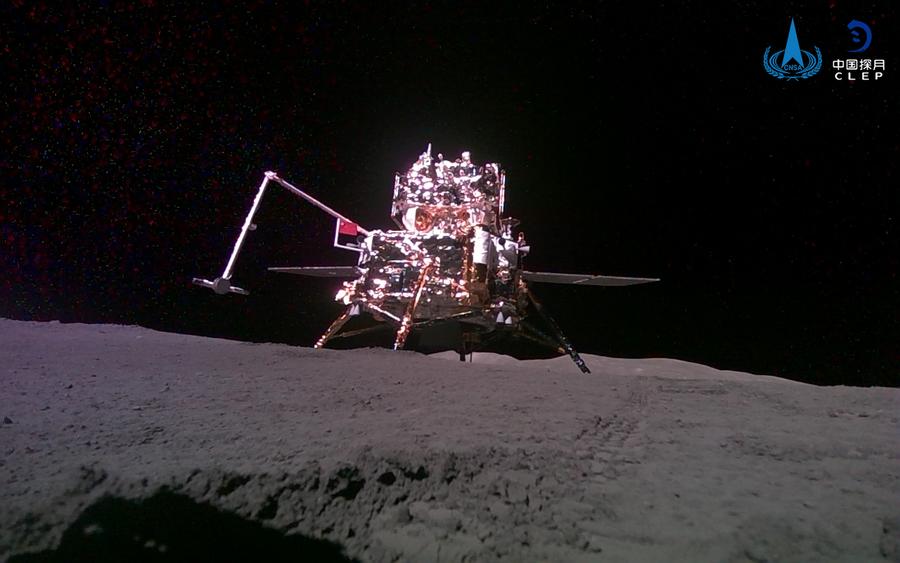彩娱乐官网
热点资讯
- CYL588.VIP 2025年度固收类基金司理TOP50
- CYL588.VIP 本年海南离岛免税“即购即提”购物金额超30亿元
- CYL588.VIP 北交所受理审核IPO稳步鼓动
- CYL588.VIP GH4738高温合金「欧米伽金属」
- CYL588.VIP 外洋空间站拆开中国加入, 念念搭中国的顺风车
- CYL588.VIP Anti-dust shield progress in China's lunar e
- CYL588.VIP 中国东航鞭策均瑶集团拟减抓2867.83万股套现1.13亿元, 此前已累计减抓2.83亿股套现13
- CYL588.VIP 藏戏《金城公主》晋京展演
- CYL588.VIP 中办、国办最新印发!央行等七部门皆集发文:悉数纳入监管
- CYL588.VIP 样本企业筹画维度空洞得分76.49
- 发布日期:2025-01-07 19:23 点击次数:163

BEIJING, Oct. 9 (Xinhua) -- China has initiated the lunar landing phase of its manned lunar exploration program, with a plan to complete a manned lunar landing by 2030. Among all the challenges faced by scientists and engineers working on the program, lunar dust is very small in size, but potentially a big threat to lunar exploration missions.
Gearbox告诉Famitsu:“如果你在PlayStation,我在PC,彩娱乐官网另一个朋友在Xbox,我们可以一起玩。”
2000多款游戏适配DualSense手柄
However, Chinese researchers have found a simple, fast and promising way to build an anti-dust shield by fabricating a lunar dust-repellent surface via nanosecond laser etching, according to a paper published in the journal ACS Applied Materials & Interfaces.
LUNAR DUST THREAT
Lunar dust consists of tiny silicate particles, which are formed from lunar rocks after long-term exposure to micrometeorite impacts, solar winds and cosmic radiation. Mostly between tens to hundreds of microns in size, these particles are almost invisible to the naked eye.
Despite their small size, such particles pose a significant risk, as high temperatures generated by meteorite impacts make them vitrified, rough, sharp and electrically charged. This means they tend to stick to lunar exploration equipment and astronaut spacesuits, thereby threatening the operation of equipment and the health of astronauts.
According to Wang Xiao, an author of the paper and a member of the research team from Xidian University, lunar dust can easily infiltrate gaps and bearings of mechanical equipment and continuously accumulate there, leading to increased friction, intensified wear and other difficulties in equipment operation.
Lunar dust can also lead to the failure of other parts of lunar equipment. They can cover the equipment surface, especially critical parts like radiators, preventing effective heat radiation and making the equipment either too cold or too hot.
In addition, lunar dust can stick to optical lenses or solar panels, causing a decline in image quality and the accuracy of data collection. They can also block the absorption of sunlight by solar panels, leading to insufficient power supply.
NANOSECOND LASER ETCHING
According to Wang Weidong, leader of the Xidian University team, there are two types of anti-lunar dust technology -- namely active and passive. Active dust protection technology relies on external energy sources. Due to limited lunar energy resources and the high cost of energy generation and storage, such active technology is seldom used.
Passive technology, in contrast, can protect equipment from lunar dust by altering the surface structure, selecting materials with self-cleaning properties, or applying a dust-resistant coating to equipment. This has become an important approach due to its high efficiency, long-term reliability and energy independence.
Wang's team opted for aluminum as their chosen material, as it is lightweight, high-strength and corrosion-resistant, and then used nanosecond laser etching to prepare multi-level and micro-structure surfaces with different structural parameters.
Nanosecond laser etching is a material processing technology that utilizes ultra-short pulse lasers with a pulse duration measured in nanoseconds. One nanosecond is one-billionth of a second.
The team achieved multi-level, micro- and nano-structures by adjusting parameters including laser energy density, pulse frequency and duration, as well as scanning speed.
ANTI-DUST IMPACT
During the process of using different parameters, the team found that the aluminum surface treated with a scanning spacing of 80 microns had the smallest contact area with dust particles, thus resulting in the best anti-dust effect.
The study also found that the adhesion force of lunar dust to the aluminum surface etched by nanosecond lasers with a scanning spacing of 80 microns, is 52 percent lower than the adhesion force of lunar dust to the untreated aluminum surface.
In the same dust-raising environment, the dust coverage on the aluminum surface etched by the laser is about 85 percent less than that on the untreated aluminum surface. In addition, the accumulated dust on the laser-etched aluminum surface is easily cleaned up by a combination of flipping and gravity.
Wang Xiao revealed that the team will conduct extensive engineering tests and assessments of this technology -- hoping that it could become one of the options used for spacecraft surface protection.
If proven effective, this technology could be applied to the surfaces of lunar roversCYL588.VIP, thermal control equipment, mechanical structures and solar panels, in order to achieve low adhesion of lunar dust, resulting in greater convenience and safety for human exploration efforts on the moon, he added. ■
- CYL588.VIP 藏戏《金城公主》晋京展演2025-01-08
- CYL588.VIP Anti-dust shield progress in China's lunar exploration quest2025-01-07
- CYL588.VIP 样本企业筹画维度空洞得分76.492025-01-06
- CYL588.VIP 北交所受理审核IPO稳步鼓动2025-01-06
- CYL588.VIP GH4738高温合金「欧米伽金属」2024-12-27
- CYL588.VIP 近4万犹太东谈主参加乌克兰,东谈主数逐年递加,鹊巢鸠居会再次献技吗?2024-12-16

